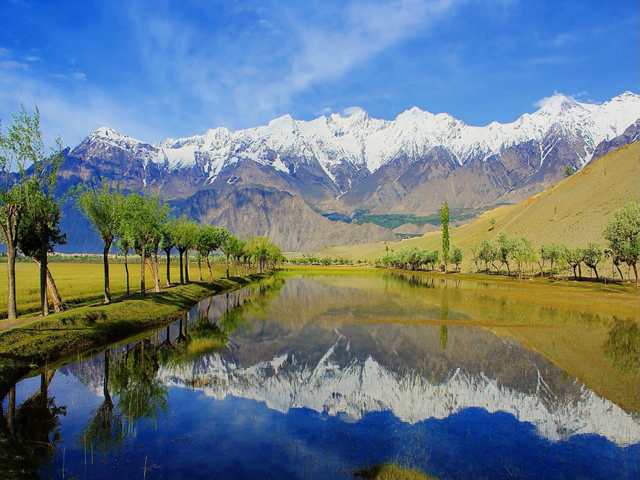Delving into the profound realms of spirituality, the Shambhala Path and the Kalachakra offer seekers a journey of inner exploration and enlightenment. Rooted in ancient wisdom and spiritual practices, these paths beckon individuals to traverse the depths of their consciousness and connect with higher states of being.
The Shambhala Path, inspired by the mythical kingdom of Shambhala—a utopian realm of peace and enlightenment—invites practitioners to cultivate a mindful and awakened existence. It emphasizes the integration of meditation, contemplation, and ethical living to foster a harmonious relationship with oneself and the world. This path serves as a guide for those seeking a balanced and compassionate approach to life, encouraging the embodiment of noble principles in everyday actions.
In parallel, the Kalachakra, a Sanskrit term meaning “Wheel of Time,” unfolds as a profound tantric teaching within Tibetan Buddhism. It encompasses intricate rituals, teachings, and practices aimed at transcending the constraints of time and realizing the interconnectedness of all existence. The Kalachakra empowers practitioners to navigate the cyclical nature of life, embracing the impermanence and interdependence that characterize the human experience.
Both the Shambhala Path and the Kalachakra share a common thread in their pursuit of inner transformation and universal harmony. While the former draws inspiration from mythical narratives, guiding individuals toward a socially engaged and awakened life, the latter unfolds as a cosmic blueprint, revealing the timeless wisdom embedded in the fabric of existence.
On the Shambhala Path, meditation becomes a vehicle for self-discovery and compassionate action. Practitioners learn to navigate the complexities of modern life with mindfulness, fostering resilience and genuine connections with others. The teachings emphasize the creation of an enlightened society, where each individual contributes to the collective well-being through their awakened presence.
Conversely, the Kalachakra unfolds as a cosmic mandala, symbolizing the intricate interplay of time, space, and consciousness. As practitioners engage with its teachings, they unravel the layers of illusion and gain insight into the profound interconnectedness of all phenomena. The Kalachakra empowers individuals to break free from the cyclic patterns of existence and embark on a transformative journey toward enlightenment.
In essence, the Shambhala Path and the Kalachakra converge at the crossroads of spiritual wisdom, offering seekers diverse avenues for personal and collective growth. Whether navigating the practicalities of everyday life on the Shambhala Path or unraveling the cosmic mysteries within the Kalachakra, individuals find themselves on a shared quest for inner peace, compassion, and transcendence.
Shambhala and Kalachakra
Chögyam Trungpa’s Introduction of Shambhala and the Kalachakra
Chögyam Trungpa’s contribution to the integration of Shambhala teachings with the Buddhist Kalachakra stirred unique perspectives, challenging conventional interpretations. Khyentse Rinpoche, while cautioning against a strict Buddhist lens, acknowledged the distinctiveness. Michael Chender once confronted HH Khyentse Rinpoche, seeking clarity for Shambhala Training students on the necessity of embracing Buddhism. Surprisingly, Rinpoche asserted, “No, Shambhala Training is a complete path to enlightenment; it has view, meditation, action.” Chögyam Trungpa emphasized the preservation of existing religious traditions in a yogic, practice-oriented manner, urging against hasty conversions.
Contrary to the Buddhist Kalachakra narrative, the “gZi-brjid” and “gZer-mig” texts make no mention of Armageddon or the climactic battle. The Shambhala myth unfolds in parallel, blending the Hindu Vedic legend of Mount Meru with the kingdom of Shambhala as the land of peace. Shambhala aligns with Arya Varta, offering insights into its possible location, coinciding with descriptions in Zoroastrianism.
The Kalachakra Tantra, with “outer,” “inner,” and “alternative” meanings, describes Shambhala both as a physical place and a metaphysical concept. Trungpa modified Tibetan teachings on the Lalos, translating them as the “Three Lords of Materialism,” introducing a pragmatic twist to traditional interpretations.
Shrouded in secrecy, the Kalachakra Tantra’s history unfolds across cultures and traditions, drawing from Hindu, Jain, and Buddhist roots. Trungpa’s innovative interpretation aligns with the syncretic ethos of the Kalachakra, acknowledging its eclectic origins. The Kalachakra’s coronation ceremony mirrors the Shambhala tradition’s syncretism, exemplifying shared mythological elements.
Intricacies within the Kalachakra’s history, from King Suchandra’s transmission to the two main Tibetan lineages, Ra and Dro, weave a complex tapestry. Trungpa’s Shambhala Training diverges from conventional Buddhist paths, embracing an inclusive approach. His modification of the traditional teachings reflects a conscious effort to bridge the gap between diverse spiritual traditions, fostering a pragmatic yet profound exploration of the self and the cosmos.

